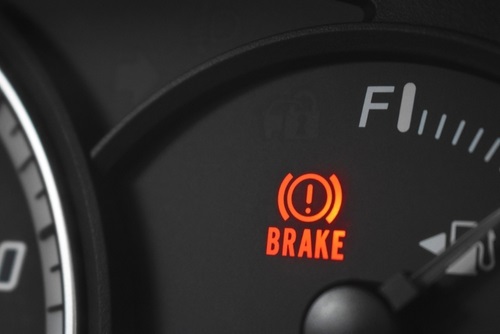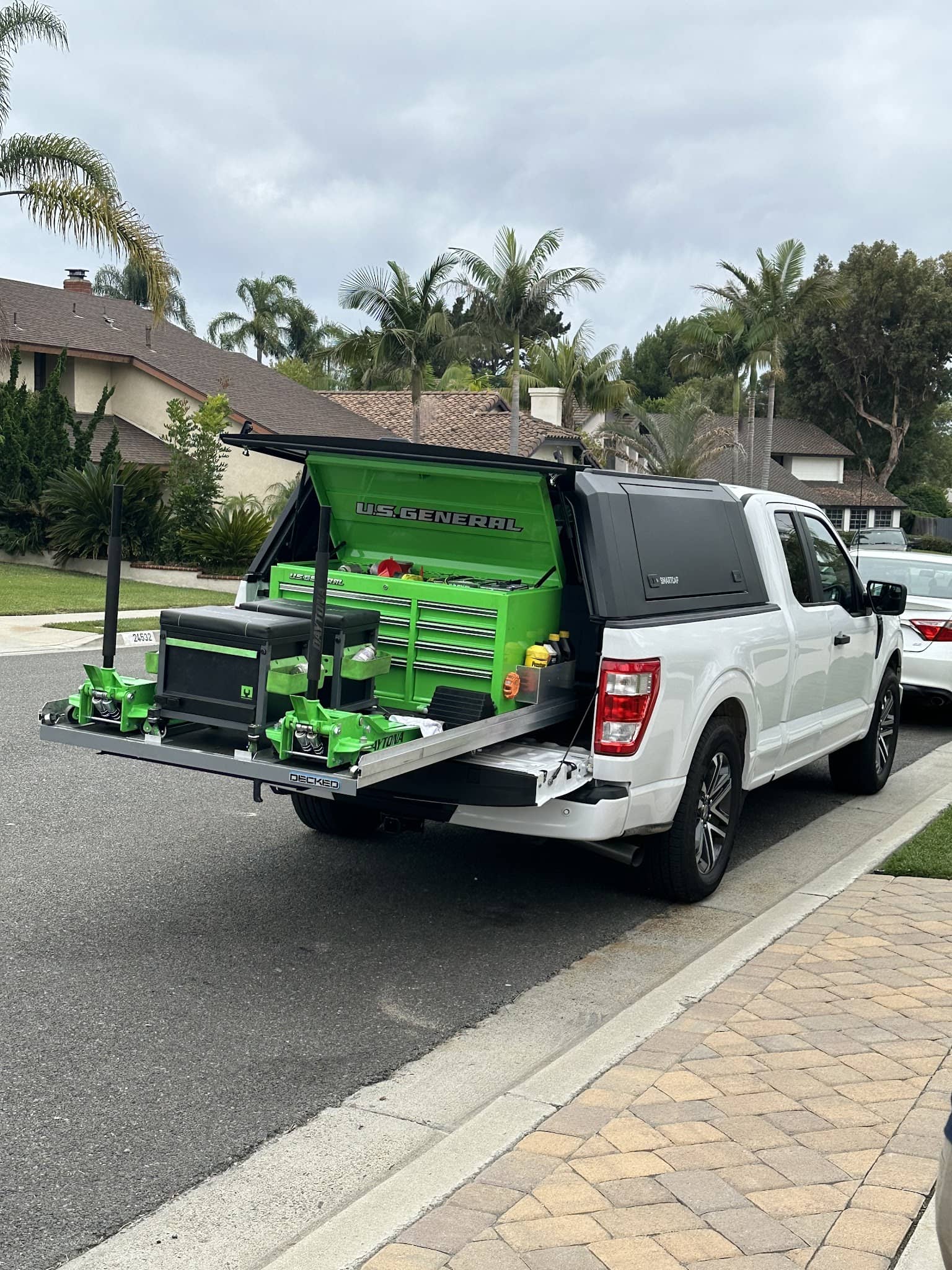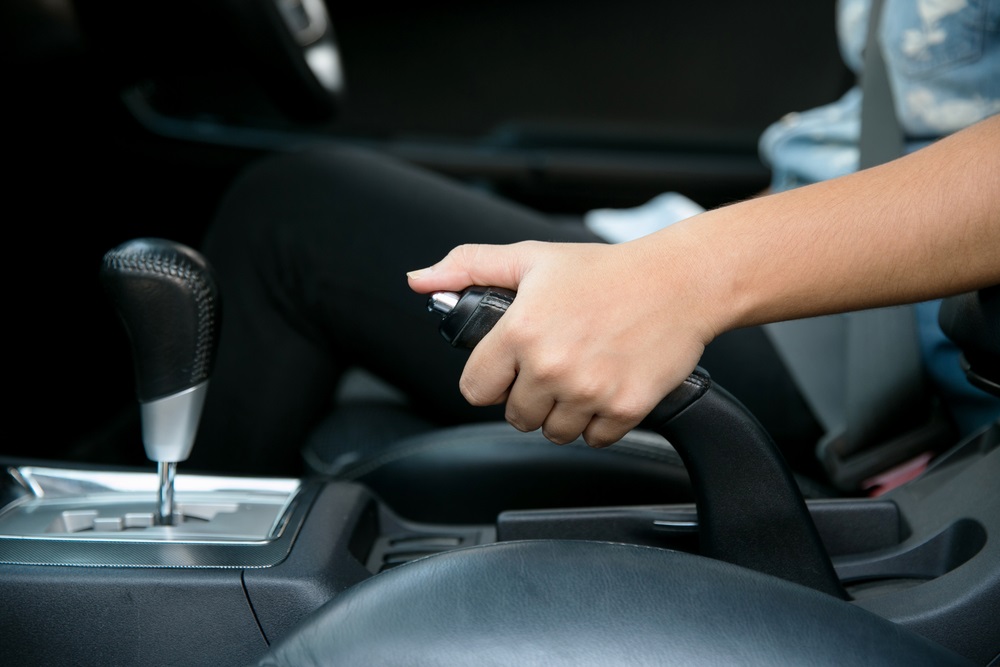Few things strike more fear into a driver than realizing they’ve been driving with the parking brake on. Whether it was a short drive to the corner sstore or an extended commute, this common mistake can lead to a range of problems—from odd smells and reduced fuel efficiency to serious damage to your brake system. At EZ-Brakes, we often hear concerns like, “I accidentally drove with the parking brake on for a few seconds,” or “What happens if you drive with handbrake on for 20 minutes?” The truth is, the longer and faster you drive with it engaged, the greater the risk.
In this post, we’ll break down what happens when you drive with the handbrake on, the consequences of both short and long distances, and the tell-tale signs that you may have done it. We’ll also dive into issues with modern systems—like the dreaded electric parking brake problem car won’t start alert—and give you clear guidance on what to do next. With insights from the brake specialists at EZ-Brakes, you’ll learn how to spot the symptoms early, how to fix the damage, and—most importantly—how to prevent it in the future.
What Is a Parking Brake?
The parking brake—often called a handbrake or emergency brake—is a secondary braking system designed to hold your car in place when it’s parked. It operates independently from your main hydraulic brakes, using a cable or electronic actuator to engage the rear wheels.
Read more: How To Release Parking Brake?
Types of Parking Brakes
• Mechanical Handbrake: Typically a lever between the seats.
• Foot Pedal Brake: Found near the driver’s left foot.
- Electric Parking Brake (EPB): A switch or button that electronically applies braking force.
These systems are effective but require proper use to avoid problems. Misuse can lead to scenarios like driving with parking brake on short distance or even extensive trips with it still engaged.
What Happens When You Drive With the Parking Brake On?
Driving with the parking brake engaged—even briefly—is a mistake many drivers make, but one that can quickly escalate into a serious mechanical issue. Whether you’ve driven for a few seconds or mistakenly completed your commute this way, it’s important to understand the potential consequences.
1- Drove With Parking Brake On? That Burning Smell Is a Red Flag
One of the most immediate and noticeable signs that you’ve been driving with the parking brake on is a sharp, acrid burning smell—often mistaken for the scent of overheating tires. In reality, this odor is typically coming from the brake pads or shoes heating up due to the constant friction between the brake components and the wheels. When pads get too hot, they can glaze over, lose their frictional properties, or in severe cases, start to smoke or catch fire. If you experience this “drove with parking brake on burning smell”, it’s time to stop driving immediately and inspect the vehicle.
2- What Happens If You Drive With Handbrake On for 20 Minutes?
Twenty minutes may not sound long in the context of your daily drive, but it’s more than enough to cause significant mechanical damage if the parking brake is engaged. Here’s what prolonged use can do to your vehicle:
• Severely Worn Brake Pads or Brake Shoes: Continuous friction rapidly wears down brake material, sometimes in a single drive.
• Warped Rotors or Drums: Excessive heat can distort the shape of your brake rotors or drums, affecting braking performance.
• Damaged Calipers and Brake Cables: Components subjected to extreme heat may seize or stretch, rendering them ineffective or inoperable.
• Boiled Brake Fluid: Overheating can cause the brake fluid to boil, leading to vapor bubbles in the hydraulic lines, which drastically reduces braking power.
This kind of damage can cost hundreds—if not thousands—of dollars to repair, depending on your make and model. At EZ-Brakes, we regularly service vehicles that have experienced exactly this kind of wear, and timely repairs can prevent worse outcomes.
3- What Happens When You Drive With Handbrake On for 10 Minutes?
Now, let’s say you’ve only left the handbrake engaged for about 10 minutes—maybe during a short city commute. You may think that’s a harmless oversight, but even this shorter duration can be harmful to your vehicle’s health:
• Accelerated Brake Wear: Even in 10 minutes, friction can heat up and wear down the brake lining.
• Loss of Fuel Efficiency: The engine must work harder to overcome the resistance, leading to increased fuel consumption.
• Reduced Performance and Handling: You might feel the car lag or resist movement, especially when trying to accelerate or change gears.
Even minor instances of driving with parking brake on short distance trips can add up over time, leading to cumulative damage. While some vehicles can endure occasional short mistakes, repeated incidents often result in long-term harm to the braking system.
Don’t Underestimate the Risk—Even for a Few Seconds
We often hear from customers who accidentally drove with the parking brake on for a few seconds and wonder if it’s a big deal. The answer depends on the vehicle’s speed and condition. A few seconds at low speed may not lead to significant damage, but it’s still enough to heat up components and slightly wear down pads. It also suggests a lapse in awareness that could lead to more severe incidents in the future.
Electric Parking Brake Problem: Car Won’t Start?
Modern vehicles often integrate the parking brake with the ignition system. If you’re seeing an “electric parking brake problem car won’t start” message, the issue could be:
• Faulty EPB module
• Damaged actuator
• Wiring issues or blown fuses
At EZ-Brakes, we diagnose these issues using advanced scanning tools to determine whether it’s a brake-related malfunction or a broader electrical failure.
Electric Parking Brake Problem Symptoms
As vehicle technology evolves, so do the systems we rely on for safety—like the electric parking brake (EPB). While convenient, these systems can present their own unique set of issues. Recognizing the early warning signs is essential to avoiding more serious and expensive repairs down the line.
Flashing or Persistent Brake Warning Light
One of the most common indicators of an electric parking brake problem is a warning light on your dashboard. This light may either flash or remain steadily illuminated, depending on the type and severity of the fault. A persistent warning usually means the system has detected a malfunction, while a flashing light may indicate a temporary glitch or communication error. Either way, it’s a sign that you should have your braking system inspected immediately.
Inability to Release the Parking Brake
If you attempt to disengage your parking brake and it won’t release, this could signal a failure in the actuator mechanism or a software issue in the EPB module. In some cases, this might also be linked to a broader electric parking brake problem car won’t start scenario, where the vehicle’s system prevents movement until the issue is resolved. This is particularly common in newer vehicles where the parking brake is tied into the ignition and transmission controls.
Clicking Noises From the Rear Wheels
Strange mechanical noises—particularly clicking or grinding—from the rear wheels can be an audible sign of a malfunctioning electric parking brake. These noises often occur when the actuator is struggling to engage or disengage the brake properly. Such sounds should never be ignored, as they might indicate gear slippage or motor strain within the EPB unit.
Brake Not Engaging or Disengaging Fully
When the electric parking brake only partially engages or releases, you might notice that your car still rolls slightly after being parked or resists movement even after you start driving. Partial engagement can lead to uneven wear on your brake pads or shoes and can compromise vehicle stability, especially on inclines. This issue often stems from faulty wiring, sensor miscommunication, or degraded electronic components.
Read more: 10 Warning Signs That You Need New Brakes
Electric Parking Brake Problem and Emissions System Problem: Are They Related?
Sometimes, EPB issues trigger other warnings, like an electric parking brake problem and emissions system problem. These messages may seem unrelated, but modern cars often tie multiple systems into a central control unit. If there’s an issue with the EPB, the vehicle may restrict performance or even affect emissions sensors.
Get these warnings diagnosed immediately. At EZ-Brakes, our techs are trained to resolve these integrated system alerts effectively.
Signs You’ve Been Driving With the Parking Brake On
Recognizing the symptoms early can save your braking system—and your wallet.
Performance Issues
• Sluggish acceleration
• Reduced fuel economy
• Pulling to one side when braking
Sensory Warnings
• Burning rubber or chemical smells
• Smoke from rear wheels
• High-pitched squealing
Dashboard Alerts
• Brake warning light that won’t turn off
• “Check Brake System” message
At EZ-Brakes, we advise you to respond to any of these signs with urgency.
What to Do If You Drove With the Parking Brake On
If you’ve just realized that you’ve been driving with the parking brake on, the worst thing you can do is ignore it. Even short distances can cause enough heat and friction to compromise your braking system. Acting quickly can minimize the damage and help avoid expensive repairs later on.
1. Stop the Vehicle Safely
As soon as you become aware that the parking brake is engaged, pull over to a safe location as soon as possible. Disengage the parking brake and let the braking components cool down. This is especially important if you notice any burning smells, smoke, or reduced braking performance. Continuing to drive—even for a short distance—while the system is overheated can escalate the damage dramatically.
Why this matters: Overheated brake pads can become glazed or even catch fire. Metal components such as rotors and drums can warp if exposed to excessive heat while still under friction. Giving them time to cool naturally reduces the risk of ongoing degradation.
2. Inspect for Visible Damage
Once the car is parked safely and the components have cooled off (typically after 15–30 minutes), it’s time for a visual inspection. Look for:
• Scorched brake pads: These may appear shiny or glazed and might emit a chemical-like odor.
• Discoloration on rotors or wheels: Bluish or purple hues on your brake discs or rims suggest overheating.
- Debris or wear around the calipers: This may indicate uneven brake application or component misalignment.
While visual inspection can offer clues, not all damage is visible. Internal brake wear, stretched cables, and hydraulic issues often require a professional inspection.
3. Visit EZ-Brakes for a Full System Check
Even if your car seems to drive normally afterward, underlying damage may not show immediate symptoms. That’s why EZ-Brakes mobile brake service recommends a comprehensive brake system inspection anytime you’ve driven—even briefly—with the parking brake engaged. During your visit, our technicians will:
• Inspect the brake pads, rotors, calipers, and brake fluid for heat damage.
• Test the cable tension and engagement response of mechanical and electric parking brakes.
• Use diagnostic tools to assess potential issues in electronic parking brake (EPB) systems, especially if warning lights appeared.
Common Repairs After Driving With Parking Brake On
If you’ve driven with the parking brake on, repairs may be necessary depending on how far and how fast you were traveling.
Brake Pad and Rotor Replacement
Prolonged friction can scorch the pads and warp rotors. EZ-Brakes provides high-quality replacements to restore full functionality.
Caliper Repair or Replacement
Overheating can damage calipers. We ensure proper alignment and operation during repairs.
Cable and Electronic Module Adjustments
Especially in electric systems, adjustments or replacements may be needed for safe operation.
Preventative Tips to Avoid Parking Brake Issues
Keep your system working and your repair bills low.
• Develop a Pre-Drive Checklist: Always confirm the brake light is off before driving.
• Listen for Unusual Noises: Clicking or dragging sounds can signal brake engagement.
• Regular Maintenance at EZ-Brakes: Schedule brake inspections to ensure both mechanical and electronic systems are working flawlessly.
FAQ – Driving With Parking Brake On
CAN DRIVING WITH PARKING BRAKE ON SHORT DISTANCE DAMAGE MY CAR?
Yes, even a short drive can cause damage, particularly if repeated over time. Brake pads may overheat and lose effectiveness.
WHAT HAPPENS WHEN YOU DRIVE WITH THE PARKING BRAKE ON AT HIGH SPEEDS?
High-speed driving with the brake on leads to rapid component wear, overheating, and potential failure of the braking system.
IS IT SAFE TO DRIVE AFTER I ACCIDENTALLY DROVE WITH PARKING BRAKE ON FOR A FEW SECONDS?
If symptoms like burning smells or dragging persist, it’s best to visit EZ-Brakes for a quick inspection to rule out damage.
HOW DO I KNOW IF I HAVE AN ELECTRIC PARKING BRAKE PROBLEM?
Look for warning lights, stuck brake functions, or failure to engage/disengage. Don’t ignore these signs—visit EZ-Brakes for diagnosis.
CAN AN ELECTRIC PARKING BRAKE PROBLEM AFFECT OTHER SYSTEMS?
Yes, it can. Modern vehicles often link braking systems with emissions and drivetrain controls. Faults can trigger multiple system warnings.
Conclusion
Whether it’s a quick errand or a 20-minute commute, this mistake can lead to costly damage. But the good news? Most issues are preventable with awareness and regular maintenance.
If you’ve experienced any symptoms discussed here for Driving With Parking Brake On, or just want peace of mind, EZ-Brakes is here to help. We specialize in both mechanical and electric parking brake systems, offering expert mobile brake services.
Book your brake inspection today at EZ-Brakes—and keep your vehicle (and your budget) safe from avoidable repair bills.




